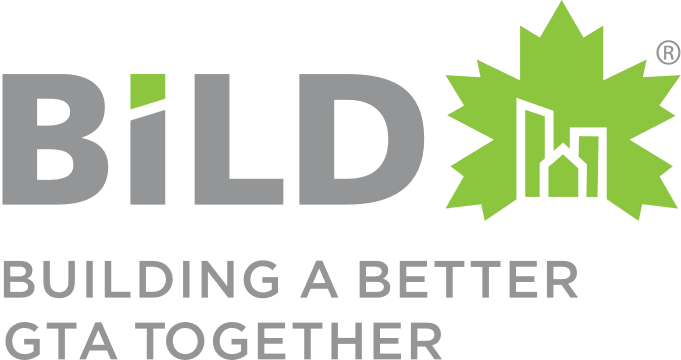Wondering why affording a home in the GTA seems impossible?
Governments must do something to lower housing costs and make the dream of homeownership possible.
1. Fix the Federal HST New Home Rebate Program
- Government fees and taxes comprise 25% of the cost of an average home in the GTA. For instance, with new condos averaging $1 million and single-family homes $1.6 million in August 2024, this adds 245,000 to $355,000 to the price tag.
- Of this 25%, a significant portion is from HST. When the GST (now HST) was introduced in 1991, the federal government collected about $8,800 on an average Ontario home valued at $276,000. By 2023, with new home values in Ontario averaging $1,023,000, this tax revenue soared to $51,152—a 479% increase. This added cost is directly borne by new homeowners.
- Initially, rebates were offered to offset this tax burden, tailored to 1991 housing prices. However, despite a 270% increase in home prices from 1990 to 2023, rebate thresholds have not changed. This means that today, virtually no new home buyers in the GTA receive a rebate, resulting in the federal government collecting an extra $42,000 per single-family home in HST revenue.
- This situation has yielded billions in additional revenue for the federal government, with Ontario alone estimated to have contributed nearly $4 billion due to unadjusted rebate thresholds. Updating these thresholds could save new home buyers tens of thousands of dollars on their purchase.
- Read More
Latest News
- GTA housing study: Region on the doorstep of compounding housing crisis. The time for bold action by governments is now.
- August 2024 new home sales in the GTA hit historic lows – down 46% from August 2023
- GTA new home sales in July at an all-time low – urgent government action needed
- June new home sales in the GTA remained low – new projects facing structural barriers; high costs to build
- May new home sales: Record-breaking lows and what this could mean for the GTA’s future housing supply
Frequently Asked Questions
How were the municipal fees numbers calculated?
The municipal fees are sourced from 2024 Municipal Benchmarking Report developed for BILD by Altus Group Economic Consulting. This is the third edition of BILD’s municipal benchmarking report.
Previous versions were published in 2022 (download here) and 2020 (download here).
The study looks at 16 different GTA municipalities over a two-year term: Toronto, Vaughan, Markham, Richmond Hill, Brampton, Mississauga, Caledon, Oakville, Burlington, Milton, Whitby, Oshawa, Clarington, Barrie, Innisfil, and Bradford West Gwillimbury.
The report uses municipally sourced data on fees and charges, land values from the included municipalities (for charges that are based on land values) during the study period and then applies them to a high-rise and low-rise development scenario to calculated the cumulative impact of the municipal fees and charges on a per unit basis.
What are the specific consequences of municipal approval delays on homebuyers?
Municipal approval delays mean it takes longer to add new housing to the market. This results in less choice for people looking to buy a new home. In addition, each month of delay adds costs to the housing development project due to project carrying costs and inflation in the cost of materials and labour.
What about the cost of land? Is that factored into these numbers?
The cost of land is not included in the 2024 Municipal Benchmarking Study, except for one particular calculation, as many factors impact land values and this report is intended to benchmark municipal performance across various aspects of the planning system.
The report does use land values to help calculate the Parkland Cash-in-Lieu charge, which is one of the charges that is included in the municipal fee calculation.
How can controlling government fees impact the overall affordability of housing?
On average, in the GTA, 25 per cent of the cost of a typical home is government fees, taxes and charges, and in the short term, reducing them presents the fastest and easiest way to influence affordability.
Things like labour and material costs and the cost of land are market-driven and adjust over time based on various factors; however, steps like indexing the HST rebate threshold can be done very quickly and would directly provide a rebate to the new home buyer, lowering the cost of a new home.
Are there any examples of cities that have successfully reduced approval times?
Yes. Included within the 2024 Municipal Benchmarking Study are a number of municipalities that have successfully improved their application approval times (in one case by 8 months) and these improvements are to be recognized. This is done by process improvements, increased accountability, and implementation of new technologies.
However, a 20-month average across the approval timeframe for a single application (and most housing requires multiple applications) is still too long.
What else is BILD doing to improve affordability for new home owners?
BILD is an industry association that represents land developers, new home builders, professional renovators, and the suppliers and professionals that support them. Our mandate is to advocate for policy and regulations at all levels of government that can make it easier and faster to build across the GTA. In doing so, our objective is to increase housing supply and positively impact affordability and choice for the customers our of industry, the new home buyer.


